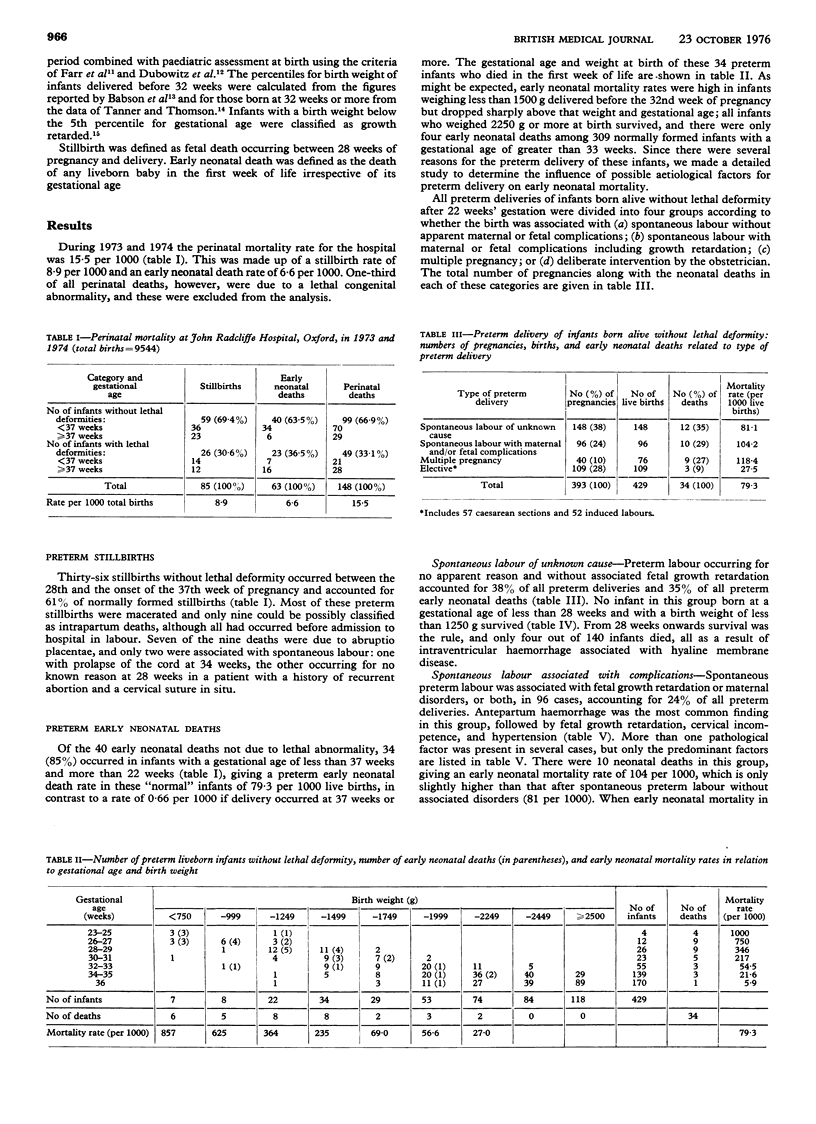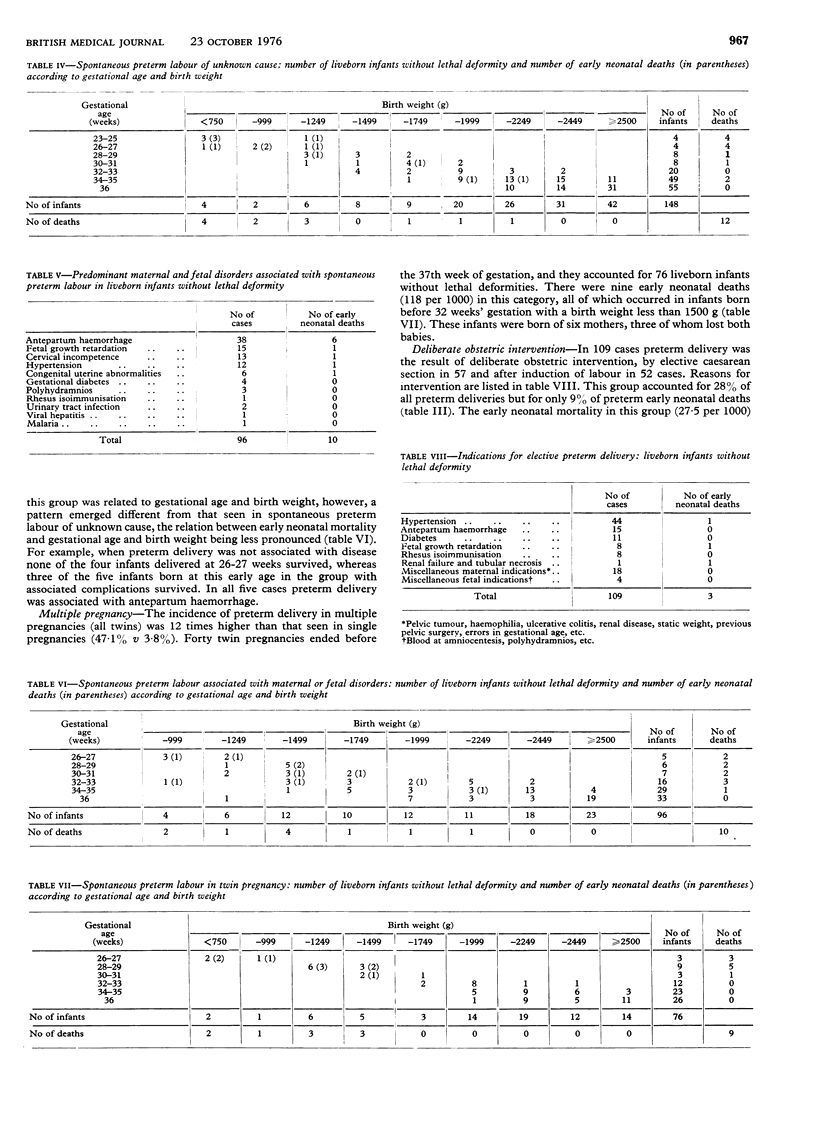Abstract
A detailed retrospective analysis was made of the records of 486 preterm infants, who accounted for 5-1% of all births during 1973 and 1974. Whereas preterm delivery did not contribute to perinatal mortality in terms of stillbirth, it outweighed all other causes in terms of early neonatal deaths. Preterm birth was responsible for 85% of the early neonatal deaths not due to lethal congenital deformities. Early neonatal mortality rates were closely linked both to gestational age and birth weight and to the reason for preterm birth. Early neonatal mortality was high (97 per 1000) when preterm labour was spontaneous, whether or not associated with material or fetal disease or with multiple pregnancy, but low (27 per 1000) when preterm delivery was elective. Preventing spontaneous preterm labour would considerably reduce neonatal mortality in our community.
Full text
PDF



Selected References
These references are in PubMed. This may not be the complete list of references from this article.
- Alberman E. Factors influencing perinatal wastage. Clin Obstet Gynaecol. 1974 Apr;1(1):1–15. [PubMed] [Google Scholar]
- Babson S. G., Behrman R. E., Lessel R. Fetal growth. Liveborn birth weights for gestational age of white middle class infants. Pediatrics. 1970 Jun;45(6):937–944. [PubMed] [Google Scholar]
- Campbell S. Fetal growth. Clin Obstet Gynaecol. 1974 Apr;1(1):41–65. [PubMed] [Google Scholar]
- Dubowitz L. M., Dubowitz V., Goldberg C. Clinical assessment of gestational age in the newborn infant. J Pediatr. 1970 Jul;77(1):1–10. doi: 10.1016/s0022-3476(70)80038-5. [DOI] [PubMed] [Google Scholar]
- Eldridge F. Blood lactate and pyruvate in pulmonary insufficiency. N Engl J Med. 1966 Apr 21;274(16):878–883. doi: 10.1056/NEJM196604212741604. [DOI] [PubMed] [Google Scholar]
- Liggins G. C., Howie R. N. A controlled trial of antepartum glucocorticoid treatment for prevention of the respiratory distress syndrome in premature infants. Pediatrics. 1972 Oct;50(4):515–525. [PubMed] [Google Scholar]
- Robertson N. R., Tizard J. P. Prognosis for infants with idiopathic respiratory distress syndrome. Br Med J. 1975 Aug 2;3(5978):271–274. doi: 10.1136/bmj.3.5978.271. [DOI] [PMC free article] [PubMed] [Google Scholar]
- Tanner J. M., Thomson A. M. Standards for birthweight as gestation periods from 32 to 42 weeks, allowing for maternal height and weight. Arch Dis Child. 1970 Aug;45(242):566–569. doi: 10.1136/adc.45.242.566. [DOI] [PMC free article] [PubMed] [Google Scholar]
- Usher R., McLean F., Scott K. E. Judgment of fetal age. II. Clinical significance of gestational age and an objective method for its assessment. Pediatr Clin North Am. 1966 Aug;13(3):835–contd. doi: 10.1016/s0031-3955(16)31885-5. [DOI] [PubMed] [Google Scholar]


